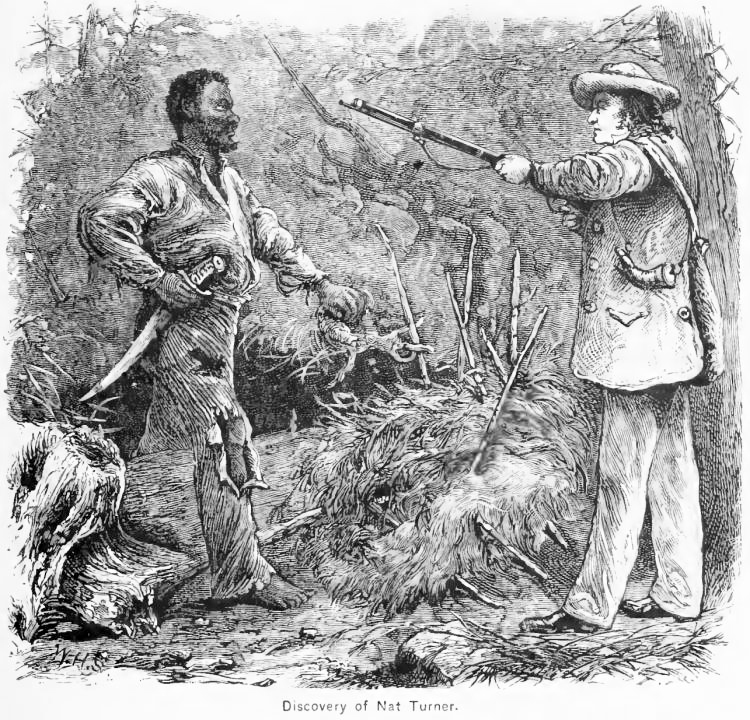-
August/September 2006
Volume57Issue4

Around two in the morning on August 22, 1831, a group of seven slaves emerged from the woods in Southampton County, Virginia, armed with axes, hatchets, and knives. They stopped at a farmhouse, hacked its four white occupants to death, took some firearms, and left—then remembered the family’s baby and returned to chop it to pieces as well.
The band was led by an enslaved black preacher named Nat Turner, a charismatic Joan of Arc figure who claimed divine inspiration. With the relaxed controls on slaves that were customary in rural Virginia, he had encountered little trouble over the preceding months in assembling a small circle of conspirators. Turner’s plan was to kill the area’s main slaveholders and their families, picking up matériel and supporters along the way, and then seize guns and powder from the armory in Jerusalem, the county seat. Ultimately the group would take refuge in some remote area, perhaps the dense, snake-infested Great Dismal Swamp.
By dawn the insurgent band numbered about 40. White residents had learned of the insurrection, probably from their slaves, and were hurriedly assembling militia parties amid the clanging of church bells. The rebels finished their butchery by slaughtering and beheading 10 schoolchildren, bringing the death toll to about 60 whites. Over the rest of the day they roved through the sparsely populated countryside but found all routes to Jerusalem blocked. They spent the night on a farm whose owners had fled.
The next morning Turner’s band, which had dwindled to about 20, found itself beset by armed white men at every turn. The group dissolved as some rebels were killed and others, including Turner, ran away. In the frenzy that followed, more than a hundred blacks, slave and free, were killed by militia as suspected collaborators. Forty-eight others were eventually tried in court; of these, 28 were convicted, and 18 hanged. Among this group was Turner, who had been captured after hiding out for two months. Before his hanging, he gave a detailed confession and testament.
Even before the rebellion, Virginia had seriously considered abolishing slavery, not so much for its inhumanity as for its danger. Nat Turner’s rebellion gave the question renewed urgency. In 1831 and 1832 Virginians debated manumission in newspapers, at local meetings, and in the legislature. In the end they went in the opposite direction, beefing up slave patrols and militia and enacting harsh new restrictions on the movements of slaves and free blacks alike, effectively ending their ability to meet in private. Other Southern states passed similar laws.
The restrictions worked, as there were no more slave revolts on anything like the scale of Turner’s. Yet they also made a peaceful end to slavery virtually impossible, hardening attitudes on both sides of the issue and setting in motion the political currents that would lead to a much bloodier resolution three decades later.

